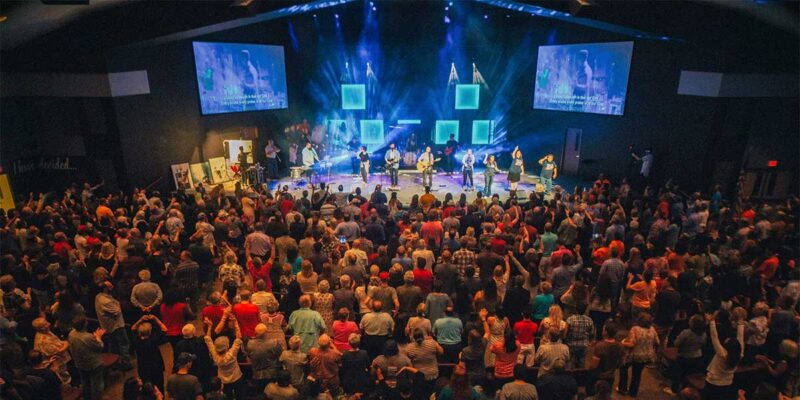4K Resolution and Multi-site Churches
 In 2003, I stood in front of a room of church leaders at the National Religious Broadcaster’s Convention and said: “Churches won’t need to spend the extra money on high definition video for the next five to 10 years.” I positioned my theory that quality NTSC video (SDI in 16:9 format) was more than sufficient with the right signal processing.
In 2003, I stood in front of a room of church leaders at the National Religious Broadcaster’s Convention and said: “Churches won’t need to spend the extra money on high definition video for the next five to 10 years.” I positioned my theory that quality NTSC video (SDI in 16:9 format) was more than sufficient with the right signal processing.
Well, here we are 11 years later and I was right — and wrong. Sure, the average church attendee still can’t tell the difference between SDI video shot with good cameras, lenses and production gear in good lighting compared to HD video — especially when the screen is the same format as HD video. But, I was wrong when I said that the cost of HD would make it too expensive for a full decade.
And yet, I’m again making a prediction: Churches will adopt 4K resolution for multi-site churches as the main application of this insanely high resolution.
When Pixels Matter
In the house of worship market, a trend that is seeing exponential growth is the explosion of churches launching multi-site campuses. These are additional campuses, typically within 15 to 30 minutes driving distance to the original (main) church campus. Recent research from Leadership Network, which keeps a strong pulse on the church market, surveyed 535 multi-site churches and revealed that 27 percent of all multi-site campuses are video-teaching only and an additional 28 percent used a combination of in-person and video teaching. That’s a little more than half of all multi-site churches, of which there are currently more than 8,000 in the U.S. alone (that’s 5 million people per weekend attending a church that has multiple campuses).
Consider that when the entire message comes from a teacher on video — that video needs to not include any distractions due to technology. And then consider the trend to use HD screens for a large, center screen (often that either drops all the way to the floor or ascends from it) for a head-to-toe shot while the side screens show the IMAG (Image Magnification — tight shots and waist-up shots). Together, there’s a great case to be made for life-like images when the entire message depends upon the suspension of disbelief that the teacher is in the room!
8 million pixels on a really large screen is the very real suspension of disbelief.
4K Content
Back to my story where I laid out the limitations of high definition video at the NRB Conference in 2003. At the time, it was fairly difficult to get any programming in HD for television, much left for a church to invest in full HD architecture. And even if they did, I argued, where were they doing to get any new content besides what they shot or created? Now this was National Religious Broadcasters Convention, so we had a bunch of churches on television in the room. Unless they were airing in a big market or on a national “big three” network, there was almost zero chance of any HD transmission in their immediate future — especially for churches not in a top 10 market.
Today, I would say that I wonder where churches will go to get 4K content. Beyond the video teaching capture at a main campus, for example, the video spots promoting ministries, events and activities have to all be produced at 4K to take full advantage of these glorious ultra-sharp displays. This, I think, is where this makes 4K still a bit out in front of the church space. Heck, just the editing processing power and storage alone will be a significant hurdle, not to mention the archival of raw footage.
But then I look at things like edge-blending on custom width screens with aspect ratios like 2:1 or 3:1 used as scenic backdrops, and I think that 4K has a lot to offer in those applications, too. Frankly, the ability to go much, much bigger with screens is very compelling when the image quality is there to keep things bright, crisp and vibrant.
Padding My Prediction
I wasn’t entirely right about my prediction for the adoption of HD for this market a mere 11 years ago. Having tasted that slice of humble pie, I recognize that the rate of change is greater than ever when it comes to technology — so much so that I am not sure that we couldn’t see a shift from HD to 4K by 2020 in the multi-site church space.
And yet, here’s the upside for manufacturers and integrators alike: You’ve got a lot of options ahead for finding ways to upscale 1080p, besides just getting churches past 1080i or 720p. There won’t be a shortage of conversion, playback, storage and distribution tools needed to help usher in 4K.





